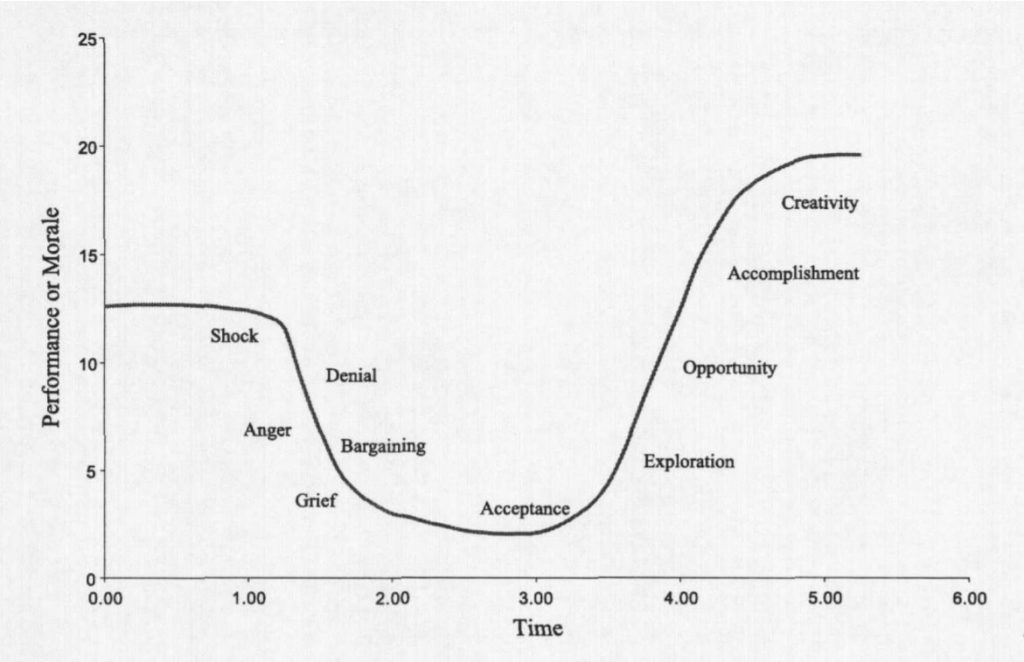How are you doing?
This standard rhetorical greeting has taken on a deeper meaning in recent weeks. COVID-19 has upturned how we live and how we work. And with our baseline sense of wellbeing in constant flux, our reflexive answer – “fine” – just doesn’t seem to cut it.
“A change curve reflects the common psychological states one encounters in crisis.”
As an entrepreneur or manager, you are not only dealing with your own fluctuating emotions, or your family’s feelings, you must also help your team navigate these turbulent times. In a time of virtual Zoom meetings, exponential pandemic curves and a constant barrage of breaking news, it is easy to feel anxious and overwhelmed.
Meanwhile, there are limited tools to help teams communicate through crises. Frequent video check-ins are a good place to start, but they may end up being counter-productive if they don’t offer a mechanism to truly gauge your team’s wellbeing.
One of the most effective references for managing a team through crisis is a change curve.
Based on work done by researchers over the years, a change curve reflects the common psychological states one encounters in crisis. From initial shock and denial, the curve then plummets into a valley of grief, before moving on to acceptance and, as morale improves, a steady climb up the slope of exploration and creativity.
These same curves can also help organizations manage restructurings or mergers and acquisitions. Teams, companies – even cities and countries – may see their current psychology reflected back to them on some portion of this curve.

A change curve provides everyone with an easy framework to label and describe how they are really feeling. The identified stage is not always accurate and certainly not precise but the entire team gets a relatively clear understanding of where everyone’s head is at.
Using this curve as a frame of reference identifies team members who are stuck in the valley of anger or grief. As a manager, these are the members of your team who may need additional support (there are valuable mental health resources available to help individuals get through this pandemic).
Teams can also use the curve as a way to describe how they are feeling as a collective. This can provide an opportunity for collaborative problem solving and brainstorming around how to move the team along the x-axis trajectory.
RELATED: Wattpad’s Allen Lau on surviving the dot-com bubble, SARS, and the financial crises
It is necessary to note that the curve is not prescriptive and progression through the stages is not linear – an individual or team may experience multiple stages at once, not experience some of the stages at all, fall back on a previous stage, go through the cycle multiple times a day, experience different stages as a team versus as an individual and experience different stages in their personal and professional lives. It is more important to use the curve as a descriptive tool that enables everyone on the team to share, have their feelings validated and learn how others are dealing with this shared experience.
A leader’s role in such a discussion is to create an emotionally safe space where team members feel comfortable discussing where they are on the curve. One of the best ways to achieve that is to start the discussion by being vulnerable and sharing what they are feeling, openly.
Unlike those past responses that ring hollow (“fine, thanks”), a change curve provides the language to truly check-in on yourself and the people you care about.
But this curve offers more than just a shared vocabulary. It also illustrates the familiar emotional journey humans confront in a crisis. No matter where you see yourself on this curve, you can take heart knowing we’re all on a similar path, navigating historical change together.
Image source Burst


